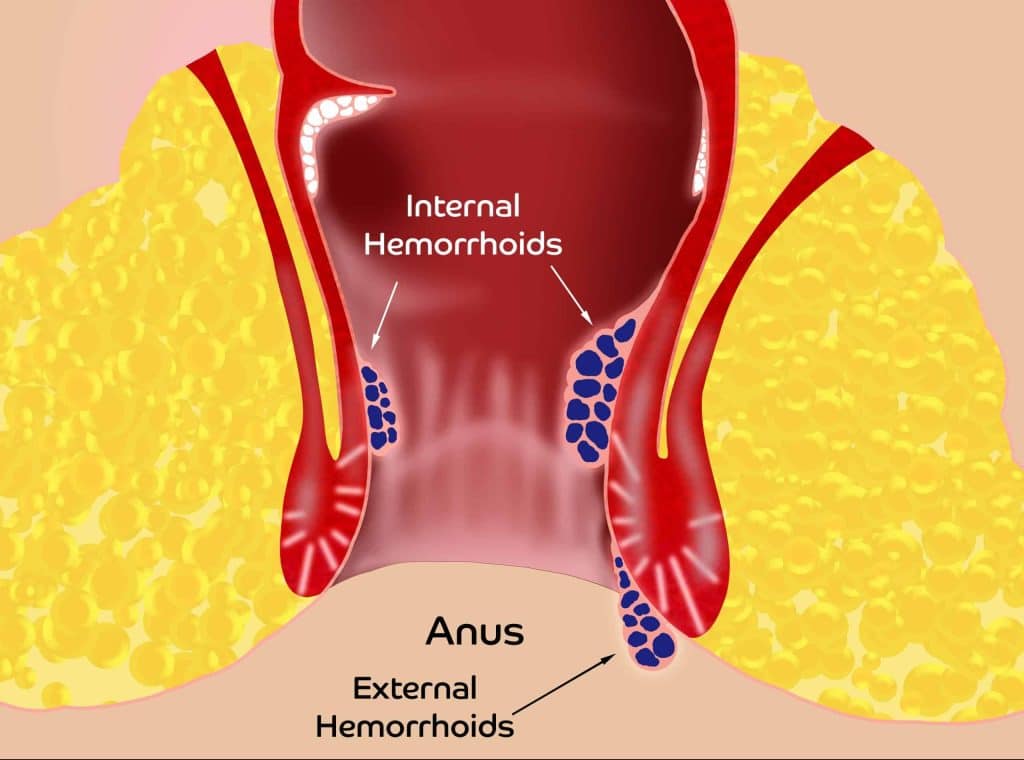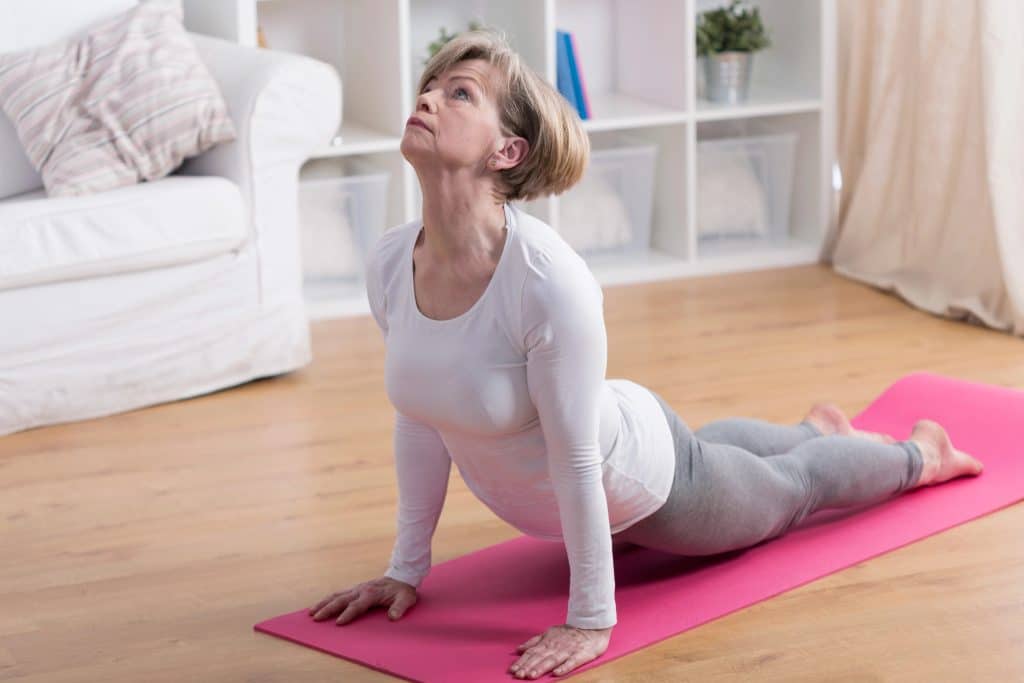If you’re dealing with hemorrhoids, the question of whether exercise can help or worsen your symptoms is crucial. Hemorrhoids, though often uncomfortable and distressing, are a common condition that many people experience at some point in their lives. Whether you’re an avid fitness enthusiast or looking to start a healthier lifestyle, it’s natural to wonder how physical activity might impact your symptoms.
Understanding the relationship between hemorrhoids and exercise is key to managing and alleviating discomfort without exacerbating your condition. In this blog, we will explore how different forms of exercise impact hemorrhoid symptoms, the types of physical activities that are beneficial, and those you might want to avoid.
What Are Hemorrhoids?

Hemorrhoids are veins located both inside and outside the anus, functioning as venous cushions with their own blood supply. Like the lungs, heart, kidneys, and spleen, hemorrhoids are essential to our anatomy.
We are born with at least six hemorrhoids—three internal ones within the anus and three external ones outside the anal opening. While the exact function of hemorrhoids isn’t fully understood, it’s believed they help in preventing stool leakage.
When these veins become inflamed and enlarged, they can lead to uncomfortable symptoms. Normally, blood flows into hemorrhoids through arteries and returns to the body via veins. But when hemorrhoids are inflamed, proteins produced by the body thicken the blood, making it difficult to drain.
This is a condition known as chronic venous insufficiency (CVI), and it occurs when more blood flows into the hemorrhoid than can flow out. Imagine a water balloon attached to a faucet, with tubes allowing water to flow back into the system. If the water thickens like maple syrup, more will enter the balloon than leave it, causing it to expand. As hemorrhoids enlarge, they begin to cause symptoms.
What Causes Hemorrhoid Symptoms?
Hemorrhoid symptoms can arise from various lifestyle, health, and genetic factors. Understanding these causes can help manage and prevent flare-ups. Several factors can contribute to the development of hemorrhoid symptoms, including:
- Straining during bowel movements due to constipation
- Diarrhea and the urgency to have a bowel movement
- Prolonged sitting
- Obesity
- Pregnancy
- Aging
- Chronic bowel issues
- Family history of hemorrhoids
Symptoms of Hemorrhoids
Hemorrhoid symptoms can vary depending on whether they are internal or external. While patients may experience pain, it typically feels like a throbbing, aching discomfort, similar to a toothache, rather than the sharp pain associated with an anal fissure.
Internal Hemorrhoid Symptoms:
- Throbbing, aching pain around the anus
- Itching
- Painless bleeding
- Anorectal pressure
- Prolapse (a protrusion outside the anus)
- A constant urge to have a bowel movement with no stool
- Mucous discharge
- Necrosis (when hemorrhoids become trapped outside the anus, requiring surgical attention)
External Hemorrhoid Symptoms:
- Thrombosis (a clot within the hemorrhoid), causing pain, itching, and sometimes bleeding
- Swelling without clotting
- Necrosis (a severe condition where tissue begins to die, requiring immediate medical attention)
While hemorrhoids can be uncomfortable, they are often manageable with lifestyle changes, dietary adjustments, and over-the-counter treatments like creams, ointments, or suppositories. For persistent or severe cases, medical procedures such as rubber band ligation or sclerotherapy may be recommended.
Hemorrhoids and Exercise: Can You Work Out?

The good news is that you can exercise with hemorrhoids, even if they are symptomatic. In fact, exercise can be beneficial, as it helps improve circulation and promotes bowel regularity, which can prevent constipation—a common trigger for hemorrhoids.
However, it’s essential to approach exercise thoughtfully. While low-impact exercises like walking and swimming can alleviate symptoms by improving circulation, high-impact activities or exercises that strain the lower rectum can worsen discomfort.
Exercises to Do with Hemorrhoids
Incorporating the right types of exercises into your routine can help alleviate hemorrhoid symptoms and promote overall health. These low-impact activities are gentle on the body while improving circulation and bowel function.
- Walking: This is a simple and effective way to stay active without putting too much strain on the rectal area.
- Swimming: Swimming provides a full-body workout that’s easy on the joints and hemorrhoids, thanks to the buoyancy of the water, reducing pressure on the rectal area.
- Yoga: Gentle stretching and poses can enhance circulation and promote relaxation, helping to alleviate symptoms without excessive strain.
- Pelvic Floor Exercises: Strengthening the pelvic floor muscles through exercises like Kegels can support the rectal area and improve bowel control, reducing the risk of hemorrhoid flare-ups.
- Cycling: Cycling on a stationary bike offers cardiovascular benefits without the impact of traditional biking, which can sometimes aggravate hemorrhoids.
- Pilates: This exercise focuses on core strength and flexibility, helping to support the pelvic region and improve overall body alignment.
- Light Aerobic Exercises: Activities like low-impact dancing or easy aerobic routines can keep you moving without causing stress on the hemorrhoidal veins.
Exercises to Avoid with Hemorrhoids
While exercise is important, certain high-impact activities and exercises that put excessive pressure on the rectal area can exacerbate hemorrhoid symptoms. It’s best to avoid these types of movements if you’re dealing with hemorrhoids.
- Heavy weightlifting: Lifting heavy weights can increase abdominal pressure, which may worsen hemorrhoid symptoms by straining the lower rectum.
- High-intensity cardio: Activities like sprinting and high-impact aerobics can jolt the body and increase pressure on the rectal veins, potentially aggravating hemorrhoids.
- Exercises that strain the lower rectum: Movements that require bearing down, like squats and leg presses, can intensify symptoms and should be approached with caution.
- Twisting exercises: Excessive twisting can stress on the lower abdomen and rectal area, potentially worsening hemorrhoidal discomfort.
- Exercises that require prolonged standing or sitting: Staying in one position for too long can lead to increased pressure on the rectal veins, contributing to discomfort.
- Sports with quick directional changes: Sports like basketball and tennis can cause sudden shifts in pressure within the body, which may exacerbate hemorrhoid symptoms.
How to Exercise with Hemorrhoids

Exercising with hemorrhoids requires careful planning to ensure that you don’t worsen your symptoms. By following these steps, you can safely incorporate physical activity into your routine while managing discomfort.
- Consult your healthcare provider before beginning any new exercise routine. Getting personalized advice from a healthcare professional who understands your condition is crucial. They can recommend exercises that are safe for you and advise against certain activities that could aggravate your hemorrhoids.
- Choose low-impact exercises that minimize strain on the rectal area. Activities like walking, swimming, or cycling are gentle on your body and promote circulation without putting too much pressure on the hemorrhoidal veins.
- Apply a lubricant. Lubricating the affected area with Vaseline or Preparation H before exercising can minimize irritation and prevent chafing, especially during activities that involve a lot of movement.
- Start slowly and listen to your body. It’s important to ease into your exercise routine, especially if you’re experiencing hemorrhoid symptoms. Gradually increasing your activity level can help you avoid unnecessary strain.
- Stay hydrated and manage your bowel movements to prevent constipation. Drinking plenty of water is essential for keeping your stools soft and reducing the need to strain during bowel movements.
- Use proper form to prevent injury. Maintaining correct posture and technique during exercise is vital to avoid putting extra pressure on your hemorrhoids.
- Warm up and cool down to ensure your body is ready for exercise. Preparing your body with a warm-up before exercise and allowing time for a cool-down afterward helps to prevent injuries and ensures that your muscles and joints are flexible and ready for activity.
Navigating Exercise with Hemorrhoids
By taking the necessary precautions and listening to your body, you can safely incorporate exercise into your routine while effectively managing hemorrhoidal discomfort. With the right approach, you can enjoy the benefits of an active lifestyle without aggravating your hemorrhoids. If you’re experiencing hemorrhoid symptoms or have concerns about exercising safely, don’t hesitate to contact our office. Our specialists are here to help you manage your condition and maintain your active lifestyle.

